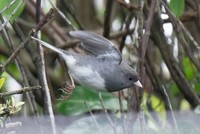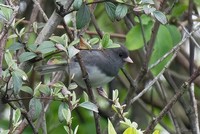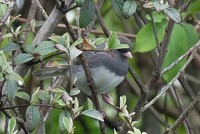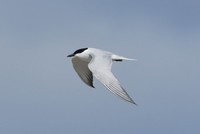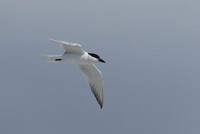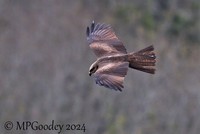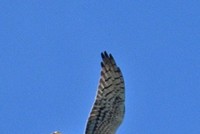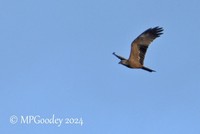Weekly round-up: 25 Sept - 01 Oct 2013
We had some great birds, we had some great birding conditions.
The east to southeast wind blew throughout much of the week and the weather vector that would draw marvellous Sibes to us went as far off the conventional Euromap…mouth-watering stuff…but largely only if you were living from Spurn northwards to Shetland.
Despite the eastern bias in the conditions, the good birds from o’er the Atlantic continued to fall too ~ albeit in tiny numbers but the quality was excellent.
As is the way at this time of year (in a good year) the sheer range and variety of rare birds on offer this week was a joy to behold in the cold light of day. Here comes a remarkable roll-call.
Way Out West was not only a very fine black & white comedy adventure for Laurel and Hardy, but was also very much the order of the day for a select band of Irish and British twitchers who took the plunge and headed to Galway’s Inishbofin for the early morning boats on 25th ~ hoping for an encounter with the Western Palearctic’s second-ever Eastern Kingbird…
After an initial burst of news to the good, the bird noted briefly in the murk around 8.10am, the rather unappealing searching conditions not only proved very frustrating for those on-site or for those waiting to travel across to the island, but also seemed to provide the perfect damp grey blanket by which the Kingbird could slip away….despite some solid searching well in to the afternoon, there was no further sign.
The sense of déjà vu was overwhelming last week ~ an Eastern Kingbird on an off-island in Galway just shy of a year since an Eastern Kingbird on an off-island in Galway ~ and that sense of “oh no, here we go again” for those who have travelled for both and missed both the Inishmore and Inishbofin birds must be beyond palpable.
…and, to continue the amazing similarity between the two events, birders on Inishbofin managed to unearth an American wood-warbler ~ just as was the case on Inishmore last year. Then it was a Myrtle Warbler or two, this time around it was a Blackpoll Warbler.
To date, there has been just one other accepted record of this lovely Setphaga (it never sounds as enigmatic or sexy as Dendroica…) in Galway ~ a five-day bird seen on Inishmore from October 6th 2000. Last autumn one also made landfall, in a remarkably similar post-Kingbird departure on Inishmore, but that may still be going the IRBC rounds.
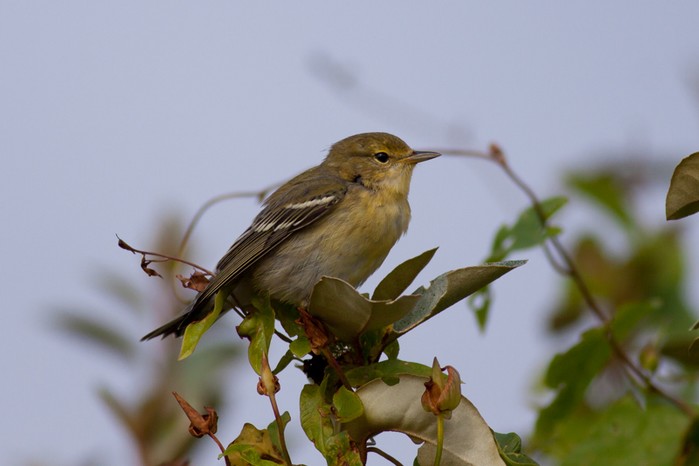
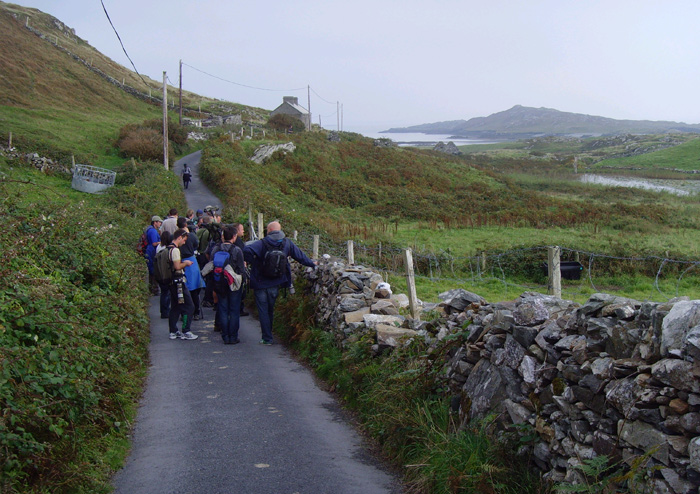
Prior to the Inishbofin bird, Ireland has recorded ten Blackpoll Warblers to date ~ the first was found on Cape Clear Island, also on October 6th, this one appearing in 1976, and a further four have arrived in Cork since, with the most recent there seen at Garinish in October 2009. Along with the previously mentioned Galway bird, other singles across Ireland have been seen in Wexford, Waterford and Mayo (in October 1985, October 1993 and November 2012).
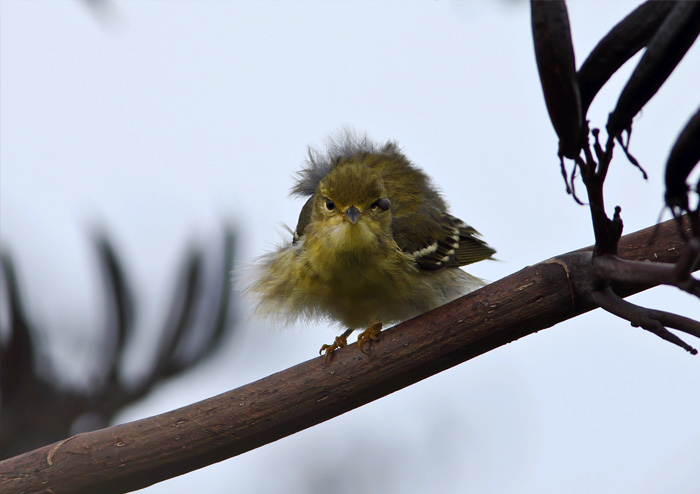
British Blackpolls have been recorded annually since 2005, last year two birds spent a decent amount of time around Scilly (on Bryher and St. Mary’s) and further birds since 2011 to 2005 have included mainland birds in Kent East Sussex and Pembrokeshire, with three birds in 2005 and two in 2007, ’08 and ’09.
As a Blackpoll Warbler was trying hard to act as some form of compensation out on Inishbofin, another remote island was moving in to top gear on the same day ~ Fair Isle doing what it does best with a supreme example of the classic “west meets east” day around this remarkable island ~ White’s Thrush, Upland Sandpiper and< Lanceolated Warbler discovered throughout 25th.
As was mentioned at the end of last week’s review, we were moving right in to the zone for White’s Thrush and, with the weather as it was, it was only a question of “when” and “where” the first of the autumn would pop up. Shetland seemed like a very sound bet and Wednesday 25th looked like a good day weather wise for this magnificent thrush to make itself known….

Although there are 80 or so records of White’s Thrush on the books, it remains a species that is guaranteed to draw gasps of appreciation and wonder every single time you clap eyes on one ~ and if you aren’t fortunate enough to be there to see it for yourself, you can gain allsorts of vicarious pleasure from photos ~ and Steve Arlow has amassed the finest set of shots ever seen of a vagrant with his collection of images of the Fair Isle bird.
Up until the end of 2011, Shetland had recorded 27 records of White’s Thrush ~ the first six of which were seen on Fair Isle (the first in 1929, the sixth in 1973) with an enormous gap of 39 years until the next one on that particular island ~ seen in September 2002. Four more have followed, including an amazing three within a week in early October 2008.


Fair Isle’s second cracker of 25th was an Upland Sandpiper seen initially around the area at Furze before heading off towards the North Light, becoming the seventh record for Shetland in the process. The first records for the islands as a whole were both on Fair Isle (in October 1970 and ~ here comes the symmetry again ~ on September 25th 1975, the most recent record for Fair Isle until September 25th 2013) with consecutive records for Foula coming in 1993, 1996 and 2004 with the most recent found in October 2006, on Unst. Around Britain and Ireland, 60 records have been accepted to date.
Ending the day on an epic 25th came the Fair Isle September species ~ Lanceolated Warbler ~ and this one, the first of the year, was trapped and ringed for good measure too.
In no way a “mega” this too is a species that can’t help to excite, even now, and as we all know, Shetland has an astonishing dominance where Lancies are concerned. By the end of 2011, there had been 128 records in Britain (Ireland awaits the first there), 106 of which have occurred around Shetland!
In a similar vein to the first records of White’s Thrush around the islands, Fair Isle recorded the first 10 Shetland Lanceolated Warblers (between 1908 and 1972) and that single rock has amassed an incredible 85 birds overall.
Fair Isle’s trio of outstanding rarities on 25th laid the ground for a far rarer arrival on 26th ~ Sykes’s Warbler.
This remains not only a tough bird to connect with (tho’ a couple have remained long enough for a decent number of people to add them to their assorted lists) but also, more importantly, something of an identification challenge (witness the debate regarding the bird seen at Climping earlier this autumn ~ opinion divided on that one and similar debates have been encountered with several other records of the 16 accepted to date.
Britain’s first was a Fair Isle bird ~ trapped and ringed in August 1959 ~ with the second British record also arriving on the island, this one in August 1977. Ireland’s first (and only) Sykes’s Warbler was found on Cape Clear in October 1990 while the first that gave listers any sort of a chance was found on Mainland Shetland in October and November 1993.

A one-day bird at Portland Bill was the first mainland British record on the amazing date of July 1st 2000 and the first east coast mainland bird arrived at Sheringham (Norfolk) in August 2002, a year which saw two more arrive (in Orkney and Sussex) within eight days of the Norfolk bird.

Prior to this week, Shetland had mustered eight records (half of the overall total), while Orkney has two and extra singles for Northumberland and County Durham in addition to those mentioned above.
As was widely expected, given the weather that was angling in to Shetland, the east coasts of the Scottish mainland and the northeast of England, further outstanding birds continued to drop in as the weekend approached and on in to Saturday too. Three of the most impressive discoveries were of the third, fourth and fifth Brown Shrikes within just over a week….an incredible, record-breaking arrival.

Hot on the heels of the first-winters found last week in Hampshire and on Orkney (both county firsts of course), the early evening of 27th saw the third young bird of September arrive at Wester Quarff on the Shetland Mainland and the next morning, the fourth in eight days popped up for a first for the Scottish mainland, found at Balcomie in Fife. Around 120 minutes later came the second, found near Collieston (Aberdeenshire) to make it three new birds within less than 24 hours and two brand new county first in to the bargain.
Here’s more on that final bird, an excellent tale of persistence and teamwork finally paying dividends from one of the finders, Phil Crockett.
Myself and Pete Shepherd met up by chance in the early morning at the site of last year's Pallas's Grasshopper Warbler, a mile from Collieston village. Our hopes were raised by the continuing easterly winds and the mass of rarities on the Northern Isles. There was yet another Yellow-browed Warbler and Redstart in this area and, once we had checked this location, I suggested to Pete that we might like to go to the edge of Collieston, and walk down the gully that leads to Cransdale Head. I suggested that this might be the day when the gully might contain something for once.
We parked up by the church and we had walked nearly all the way to the Cransdale end of the thistle, nettle and willow herb strewn walk, when Pete shouted that there was a shrike up at the top edge of the slope. It had flitted rapidly out of view but came back up again shortly afterwards showing us a glimpse of its rich brown upperpart plumage and apparently very long and thin looking tail. The time was just before 10.00am. These initial glimpses managed to set our pulse rates up, especially when combined with a very dark contrasting mask.
What followed was a tense process of continually trying to relocate an incredibly elusive and hard to follow bird. It seemed to mostly favour the gully area, but invariably sat very low in the vegetation and so was difficult to locate; consequently, perched views were fleeting at best. It would spring up from unexpected spots and fly low to the ground, making it impossible to follow and track. We would lose it for 20 minutes at a time, only for one or both of us to glimpse it and see some of the very suggestive features in the plumage and structure. We continued to be amazed by how long the tail looked in flight and the overall colour tones of the bird left us breathless; the lack of white in the wing also told us it wasn’t an ‘Izzie’. Nonetheless it was proving impossible to see the necessary details of the primary projection or tail. By now we had heard news of the Brown Shrike at Fife Ness, so this just left us more determined to stick to the task.
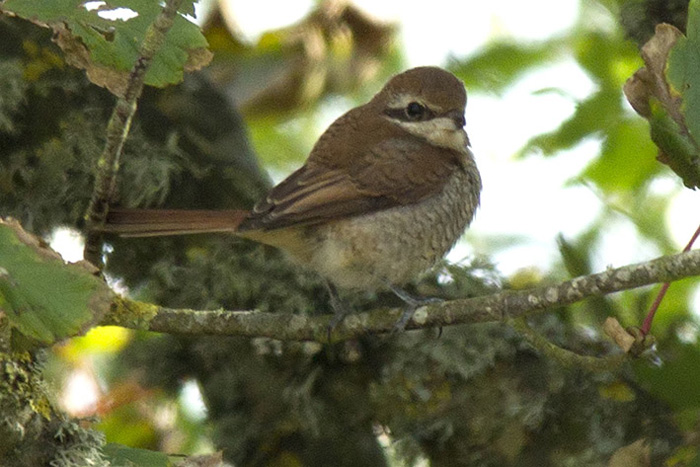
By 11.30 we were certain we needed more eyes to help pin the bird down. One of the other Collieston birders was not around, but Chris Gibbins proved to be very close (or a very fast driver) when I texted him about a very interesting “brownish shrike" in Collieston that we needed help tracking down and nailing.
The process continued, with the three of us chasing the bird around for another hour or so -the bird ended up in the churchyard bushes at one point, but nipped out the back to the gully rather than show itself properly.
Thankfully we eventually got perched views in the scope – the extra person made it much easier for one person to keep an eye on the position of the bird in the gully whilst the others moved into better positions to observe it. With us all three on the top edge of the slope looking down, we got the scope fixed on it. At this point Chris was able to count the exposed primaries and from a slightly different angle I was able to call up the short outer tail feathers and Pete was able to see the relative paucity of upperpart barring and other plumage features. It was a bit of a jigsaw puzzle of views, but it fitted together to confirm the identity as a 1st year Brown Shrike. At this point we agreed we had seen the critical detail and so felt able to put out the news of the find; it was two and a half hours after the bird was first sighted – hard work. The bird was a first for the region and continued an excellent year for North east Scotland.
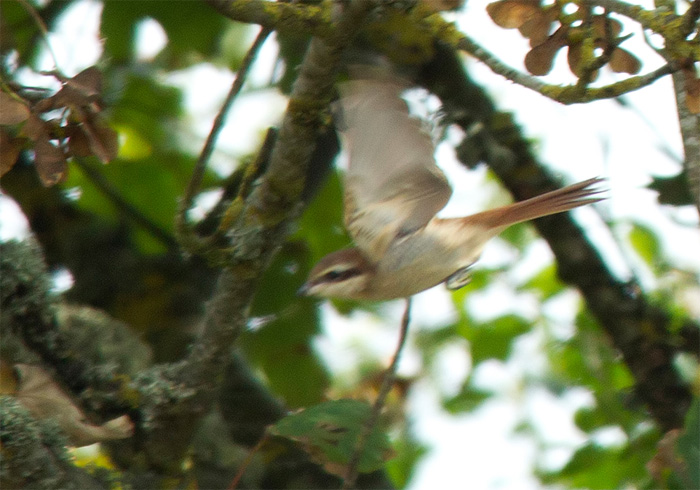
In the early afternoon it showed very well in the long hedge area near the church and likewise for a short period the next day, but mostly just amazed observers with its ability to disappear at ease.
There have now been five records of Brown Shrike on Shetland ~ as discussed last week, the first (for Shetland and Britain) appeared in September 1985 and has been followed by singles in 2000, 2004 and 2009~ the span of dates for all five is covered by September 19th to October 11th.
The amazing quintet noted this month (all arriving between 20th-28th) is a sensational new record ~ again as touched upon last week, 2009 was the lead year until now, with three (the records falling then between September 26th-October 11th). If the weather was to hold (and that’s a big “if”) the total of five Brown Shrikes could rise still further and in to unchartered territory for this, still, exceedingly exciting species.
Along with the three new arrivals in Shetland, Fife and Aberdeenshire, one of last week’s youngsters made a surprise reappearance on North Ronaldsay ~ noted again on the island on 27th and 29th, though it continued to remain elusive.
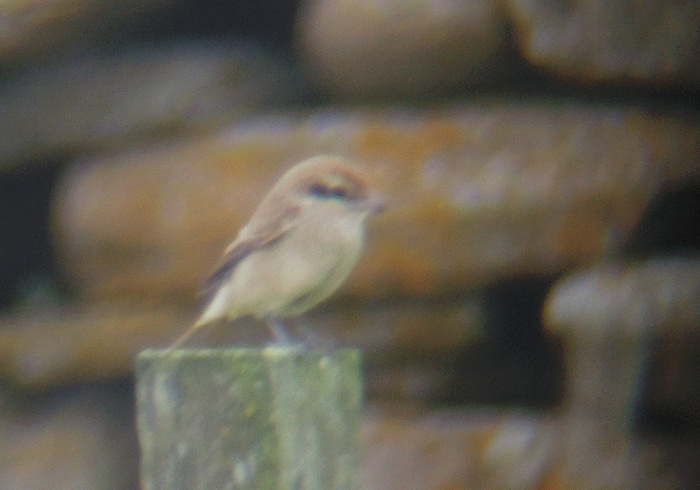
Isabelline Wheatear remains a tricky bird to connect with but the weather of the past few days, warm winds from the ESE, were all pointing towards the appearance of one of those robust, stocky, pallid wanderers somewhere in the country and it wasn’t that much of surprise when news spread of one at Martin’s Haven in Pembrokeshire on 30th (with the bird still present the next day).

There are 31 accepted records of Isabelline Wheatear in Britain and one in Ireland and the bird this week will become the second for Pembrokeshire and the sixth for Wales. The first county record was a three-day bird on Skokholm in September 1997 while further birds in the Principality have been noted in Glamorgan (in 2011), in Gwynedd (both on Bardsey, in September 1997 and October 2002) and on Anglesey in September 2002.

All bar one of the 31 modern day records (the first was shot in Cumbria in November 1887) have arrived between September 14th to November 5th ~ with a spread of 10 in September, 18 in October, and 3 in November. The one spring exception is the, still, remarkable spring bird at Norfolk’s Winterton Dunes on May 27th 1977.
A busy 30th saw the second “Mega Alert” of the day ring out mid-afternoon and, once again, it was Shetland that was the centre of attention. This time, it was another arrival from the Nearctic, not a cutesy wood-warbler but a rather more subtle wandering wader…
Hudsonian Whimbrel is slowly sauntering away from single figures here ~ to date there have been a dozen accepted records with the majority coming in the last 13 years. This week saw the appearance of one on Mid Yell on 30th-1st and will become the fourth record for Shetland ~ thanks to Dave Pullan for supplying such a stunning flight shot too.
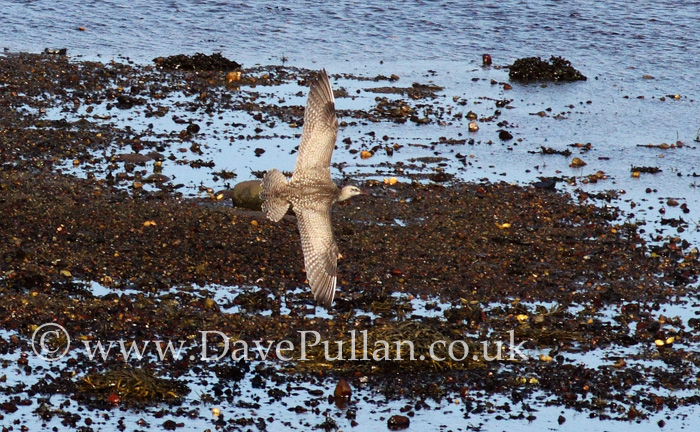
This relatively recent split was first recorded on Fair Isle in May 1955, with Ireland’s first seen in Kerry, at Tralee, two years later. An “at-sea” bird was found on board a boat well off the coast of Cork in August 1960 (it later died) with Shetland’s second coming in 1974 on Out Skerries. Wexford’s Tacumshin recorded one in 1980 and then there were none until the much twitched “insurance only” bird in south Wales at Goldcliffe in May 2000 (the same bird was there again two years later).
Another much-admired bird was in Cumbria in the summer of 2007, with another on Shetland (Fair Isle’s second) appearing the same year with Scilly’s one and only record of Hudsonian Whimbrel coming the following autumn, in September 2008. More followed in 2009 (on the Outer Hebrides) and 2011 (in County Cork) and then came a small gap to the latest one for Shetland.
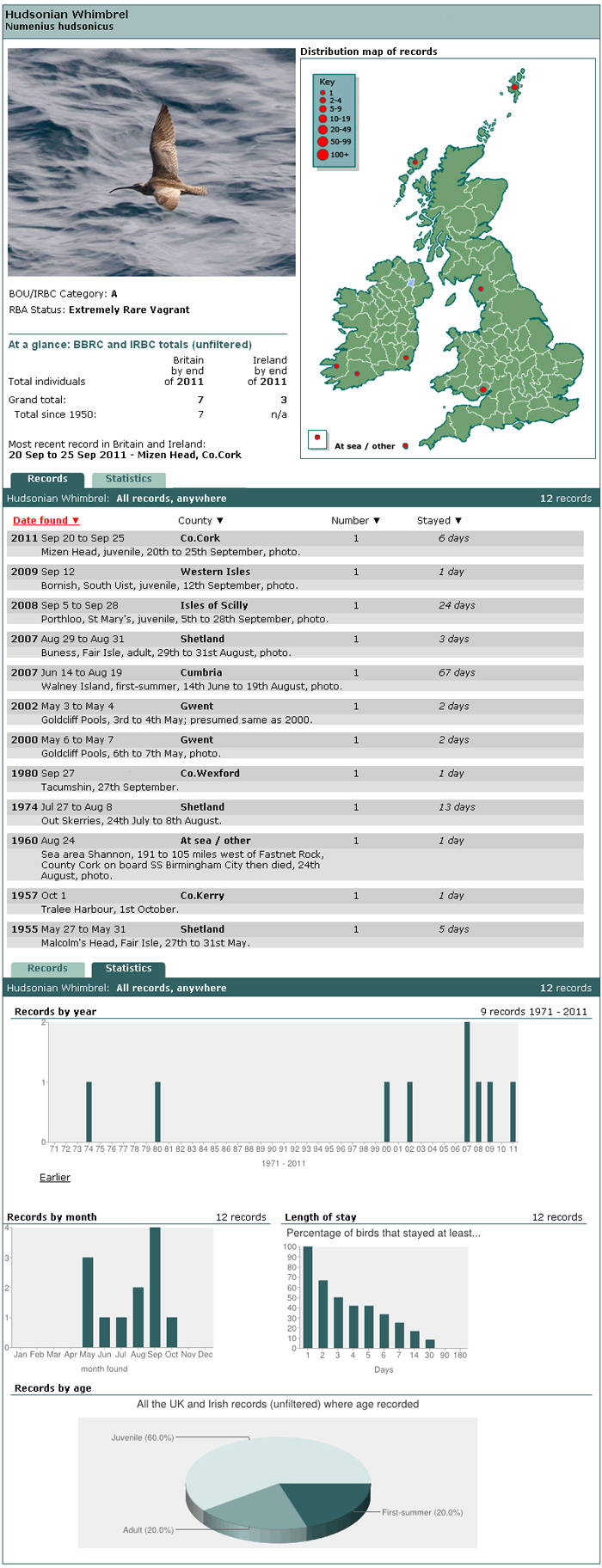
Meanwhile, keeping the eastern vibe alive, the next newbie was the hoped-for Pechora Pipit found (inevitably) on Shetland, this one at Levenwick, on Mainland on 28th-1st at least.
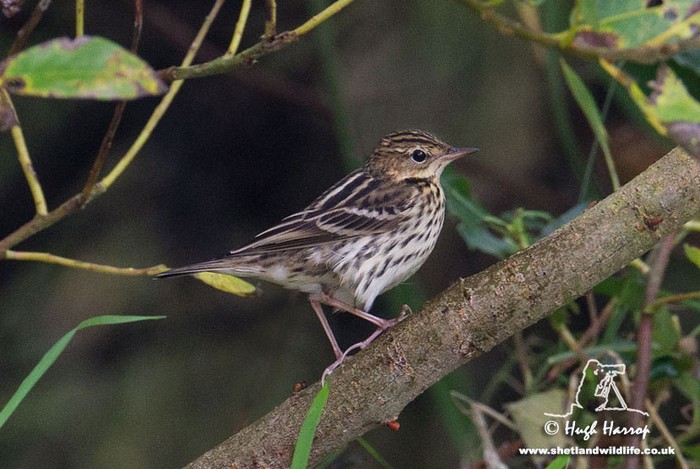
As with countless other far eastern travellers that have been documented here over the past 18 months or so, Pechora Pipit remains almost entirely in the realms of Shetland ~ by the end of 2011 there were an amazing 79 records had been clocked up from a grand total of 96 birds in all.
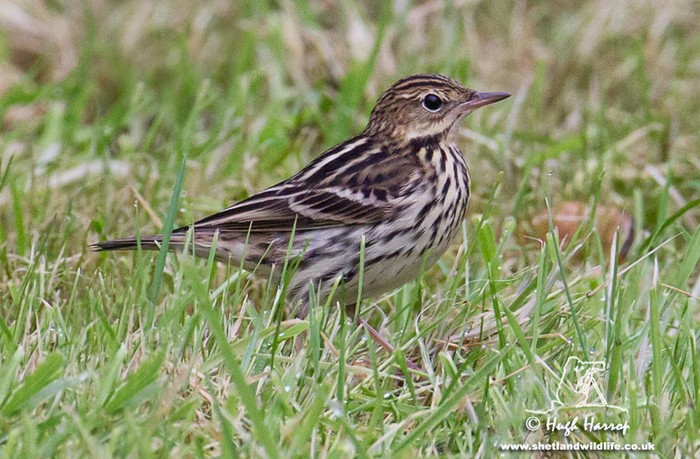
Of those 96, 30 appeared in the last decade (excluding at least four in 2012) with nine in 2009. The only blank year in the last 10 is 2010.
Thanks to Shetland Wildlife’s Hugh Harrop, we can all enjoy this week’s bird via the power of video….
With the weather taking a decidedly passerine-y turn to the east, it was no surprise to see a tailing off in seabird records this week.
A single Great Shearwater was seen at sea off the Mullet (Co. Mayo) on 25th with a second seen from a Scilly pelagic on 30th while the 26 records of Balearic Shearwaters managed just two double figure counts, both coming from Devon’s Berry Head ~ 21 on 27th and 10 on 28th. Most records came from English Channel coastal counties but birds were noted on the east coast from Norfolk to North Yorkshire.

There were 15 Long-tailed Skuas recorded this week, with three off Whitburn (Co. Durham) on 26th, two seen from Ballycotton (Co. Cork) on 27th and two around Canvey Island (Essex) on 29th the only multiple records. Singles on 26th were seen off Filey (North Yorkshire), St. Abb’s Head (Borders) and Red Island, Skerries (Co. Dublin), with further lone birds on 28th in The Minch (Highland) and off Burial Island (Co. Down) while on 29th there was one each for Sennen Cove (Cornwall) and Whitburn. The final one of the week was seen at Spurn on 30th.
Just 34 Pomarine Skuas were noted from 15 counties across Britain and Ireland with four off Hound Point (Lothian) on 28th and three from Whitburn on 26th the only numbers of any note (and even those wouldn’t see the light of day normally) ~ arguably the most interesting record of the week was of the lone Pom that headed over Somerset’s Chew Valley Lake on 28th.
A juvenile Sabine’s Gull was seen from Barns Ness (Lothian) on 25th and was followed by one off Whitburn on 26th, two in The Minch on 27th (when the adult returned once again to Cobh in County Cork), an adult west past Rame Head (Cornwall) on 28th and on the Scilly pelagic of 30th, along with three Grey Phalaropes. As with other seabird species this week, numbers of Grey Phals were miserly compared to recent weeks ~ the only birds seen were at the National Wetlands Centre (Carmarthenshire) on 25th-26th, Titchwell RSPB (Norfolk) on 26th and in Poole Harbour (Dorset) on 29th-1st.
The only Leach’s Storm-petrel was seen heading north past Thorpeness (Suffolk) on 27th while a Little Auk was reported off the beach at Cley (Norfolk) on 29th and two were seen at Bangor (Co. Down) the following day.
No question what the big, unfolding story of the week where Herons, Egrets & allies were concerned ~ the west coast “fall” of Glossy Ibis.
In the southwest, single birds were at Dinham (Cornwall) and Man Sands (Devon) on 25th, with another at Galmpton, also in Devon, on 27th when the Meare Heath bird was also noted as still present. A third Devonian single was in the north of the county, on Horsey Island on 30th before heading towards Barnstaple.
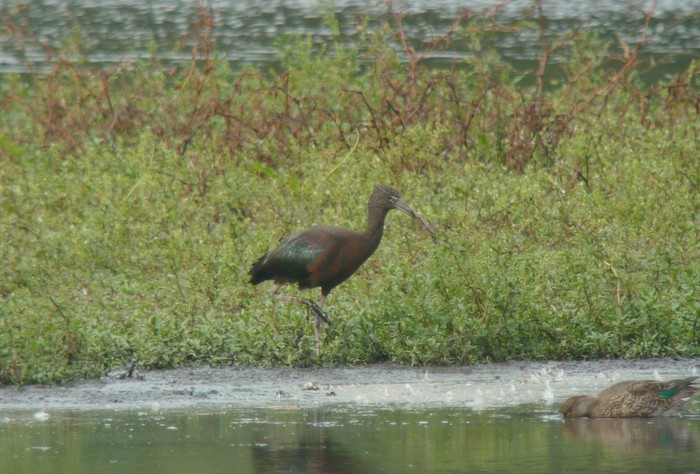
Moving in to the far end of the Westcountry, a flock of 15 were at Cotswold Water Park (Wiltshire) on 26th ~ the week’s largest single group ~ with three singles seen in Wales, at Ynys-hir RSPB (Ceredigion) on 27th, at Rhyl (Denbighshire) on 28th-29th and at Malltraeth RSPB (Anglesey) on 30th while near the Welsh border, in Shropshire, one was at Telford (with it or another at the River Onny) on 29th.
The northwest of England was were much of the action was though ~ a flock of four were found near Bolton (Greater Manchester) on 27th (where they remained to 30th) with a flock of 12 reported from Leighton Moss RSPB (Lancashire) the same day and they were followed by news of at least 14 Glossy Ibis at High Foulshaw (Cumbria) on 28th (with six there on the last day of the month). Also on 28th, singles were at Seaforth and Marton Mere (and one at Fleetwood on 1st), with four over the Solway at Caerlaverock (Dumfries & Galloway) on 30th.
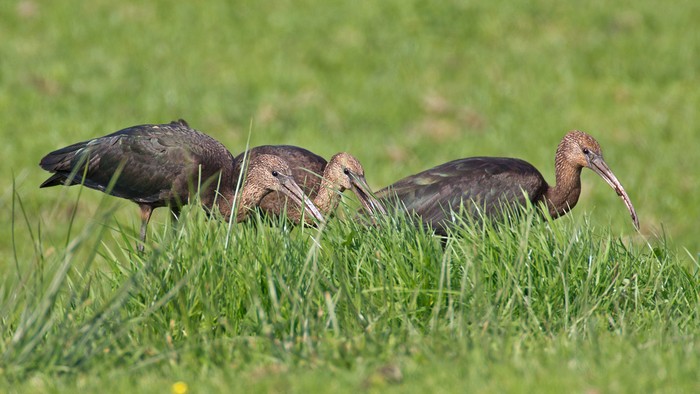
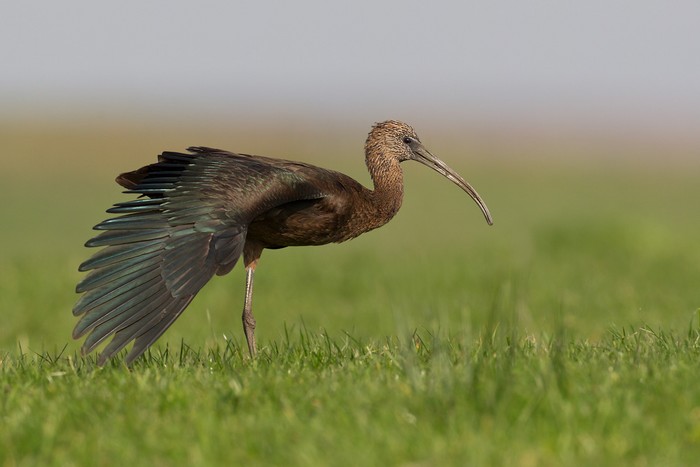
On Scilly, a juvenile Purple Heron was found on the rocky islet out from Porthloo Beach on St. Mary’s on 28th before moving heading over the golf course, settling at Porth Hellick before appearing on Lower Moors later the same day ~ it was still present on 1st.
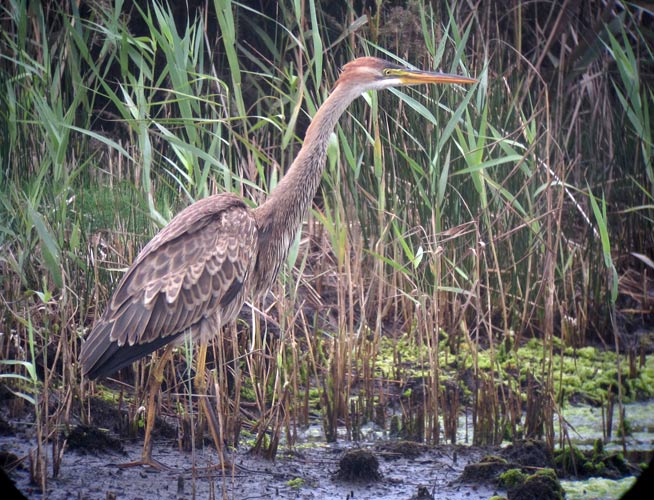
Lincolnshire’s Cattle Egret was at Tetney Lock until 26th and was followed by singles in East Anglia at Minsmere RSPB on 29th and Cley, Salthouse and then Burnham Overy on 30th.
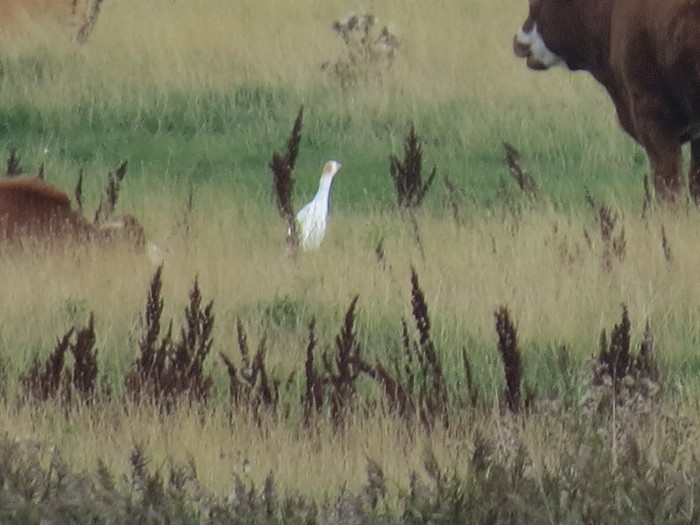
Dungeness managed six Great White Egrets on 1st while the trio remained at Minsmere throughout the week ~ while there were also two seen at Welshpool (Powys) from 26th-1st at least and also at Banks Marsh NNR (Lancashire) from 28th-29th. New singles were at Fairburn Ings (West Yorkshire) and Swindon (Wiltshire) on 26th and Blagdon Lake (Somerset), Northwick (Gloucestershire) and Scolt Head Island (Norfolk), all on 28th.
Familiar singles remained in Cambridgeshire at Fen Drayton RSPB and Wicken Fen NT, in Hampshire at Blashford Lakes HWT and on the Isle of Wight at Brading Marshes while Somerset’s Shapwick Heath hosted six in a pre-roost gathering on 30th.
The largest group of Spoonbills in 2013 was noted in Dorset this week, 20 birds in Poole Harbour, at Shipstall Point, on 27th. In Norfolk, 13 were on the saltings at Brancaster on 25th (after seven were at Titchwell and five were at Stiffkey earlier the same day). In Suffolk, Minsmere had five over on 26th and four were at Orford Ness on 29th while back in Dorset, seven Spoonbills arrived at Lodmoor RSPB on 28th and five were over Hengistbury Head on 30th. The week ended with a flock of nine birds heading (loosely) along the Thames, seen at Cliffe Pools RSPB (Kent) then over the Wetlands Centre at Barnes, in west London less than an hour later.
Inland singles this week were seen at Eyebrook Reservoir (Leicestershire) on 27th-28th and also at Venus Pool NR (Shropshire) and Sandwell Valley (West Midlands) on 28th. Two birds were on the Taw Estuary (Devon) and the National Wetlands Centre (Carmarthenshire) over the weekend, and singles were in Hampshire, West Sussex, Ceredigion and Kerry.
A flock of four adults and a single juvenile Common Crane spent a few minutes circling over Blakeney village (Norfolk) on the morning of 26th before drifting west ~ they were seen half an hour later heading over Titchwell before flying out to sea over Holme. Five were also noted at Hatfield Moors (South Yorkshire) on the same date, with 14 at Throne Moors, on the South & East Yorkshire border, on 28th (and again on 1st) ~ the same flock were seen the following day at Goole. Lingering singles were still on the Rogerstown Estuary (Co. Dublin), Baltasound, Unst (Shetland) and Slimbridge WWT (Gloucestershire) while new was one at Myroe (Co. Derry) from 29th and over Harlow (Essex) on 1st.
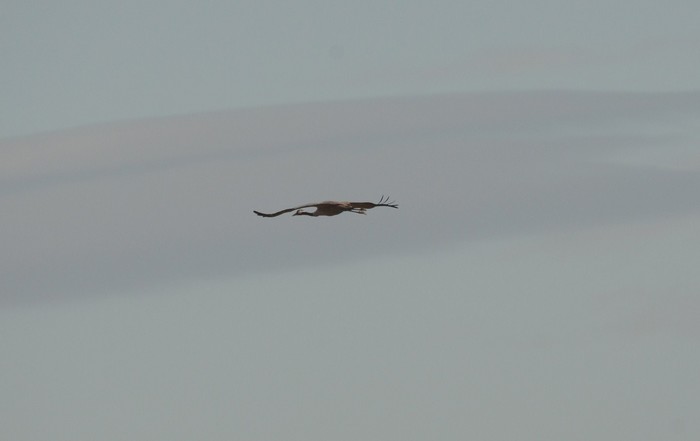
In Scotland, a Spotted Crake at Lochwinnoch RSPB (Clyde) was new on 27th and was one of four noted this week. In East Yorkshire, one remained at Blacktoft Sands to 25th while singles also lingered at Ynys-Hir RSPB (Ceredigion) to 29th and Oare Marshes (Kent) to 1st.
There was another pretty strong showing for migrant Corncrakes this week ~ at least 12 noted in all with the first of them appearing on Unst, at Valyie on 25th. Two separate singles were seen in north Norfolk on the evening of 26th, just to the west of Sheringham and at Burnham Overy Staithe ~ an almost unprecedented double same-day arrival in the county ~ with the latter bird seen again on 27th.
Further Shetland Corncrakes followed at Scatness on 26th and on Fair Isle on 28th and 1st, while the others this week were seen at Horwich (Greater Manchester) and Christchurch (Dorset) on 27th, Cahore (Co. Wexford) and North Ronaldsay (Orkney) on 28th, at Polgigga (Cornwall) and Garinish (Co. Cork) on 30th and East Chevington NWT (Northumberland) on 1st.

Amongst the early arrivals back this week (presumably for a winter along the south coast) were the individual Red-breasted Geese at Langstone Harbour, Hayling Island (Hampshire) from 27th (seen later at Farlington Marshes and, the following day at Fareham Creek) and Mersehead RSPB (Dumfries & Galloway) on the same day. Also new in were early single Black Brants on the Exe Estuary (at Dawlish Warren and Cockwood) on 27th-29th and at Leigh-on-Sea (Essex) on 29th.
In County Kerry, the white Snow Goose was at Black Rock Strand again on 25th-1st and further singles were noted at Ravenglass (Cumbria) on 26th and Kinloss (Moray) on 28th.
Lincolnshire’s impressive little flock of three Blue-winged Teals were all together until 1st, while the drake at Frankfield Loch was in place from 25th-1st.
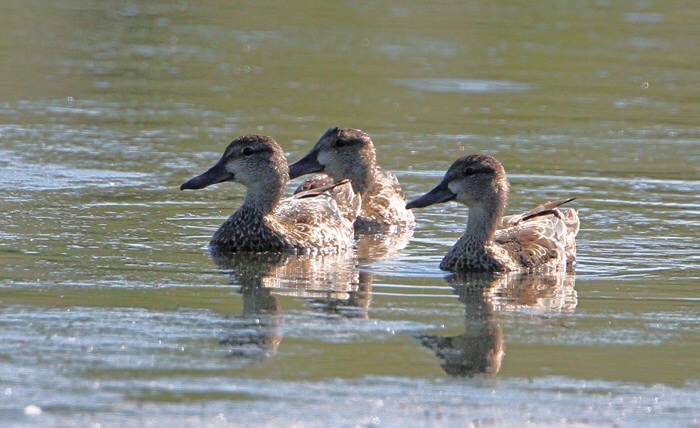
The drake Lesser Scaup was still in place at Pennington Flash CP (Greater Manchester) until 30th when last week’s drake in south Wales was back in Cardiff Bay. Ring-necked Ducks included the drake at Meikle Loch (Aberdeenshire) on 27th-28th and female on Cross Lough, Louisburgh (Co. Mayo) to 29th when a drake arrived there too. In Sligo, on Lough Gara, a drake was noted on 30th.
In Somerset, the female Ferruginous Duck was again at Chew Valley Lake on 25th with the drake still there on 26th-27th and ~ winter’s coming ~ a drake Green-winged Teal was at Martin Mere WWT (Lancashire) from 1st.
The only Surf Scoter logged this week was an adult drake again off the dunes at Blackdog (Aberdeenshire) on 27th.
Cornwall’s 10th Black-winged Stilt of the 2000’s must have been a nice surprise on the Hayle Estuary on 27th ~ all of those 10 have appeared since 2005 and include flocks of three and four). Overall, there have been 19 records in the county (seven of them multiples) but only one September record prior to this one.

The 27th Semipalmated Sandpiper of the autumn so far (a juvenile) was found at Derrybeg (Co. Donegal) on 28th while another youngster remained at Tacumshin (Co. Wexford) to 27th.
Both of the week’s Baird’s Sandpipers were noted in County Kerry ~ a new arrival was on Derrymore Island on 28th while the bird found last week at Carrahane Strand was present to 25th. Off the coast of Northumberland, on Brownsman, Farnes, an adult White-rumped Sandpiper was seen on the afternoon of 25th.

Four of September’s Lesser Yellowlegs were still dotted far and wide this week ~ one a piece for England (at Cliffe Pools RSPB), Wales (still at the National Wetlands Centre), Scotland (again around Pool of Virkie on the Shetland Mainland) and also Ireland (at Murlach in County Galway).
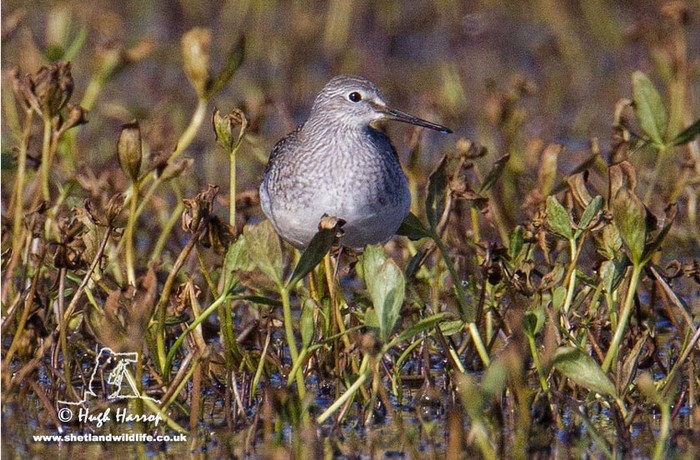
Up to eight or nine American Golden Plovers were seen around Ireland this week ~ two adults (including a new arrival) were at Tacumshin on 26th with one again at nearby Lady’s Island Lake on 28th and further new birds (?) were on Tern Island on 29th and the North Slob WWR on 30th. In Derry, an adult was on Myroe Levels on 26th with a juvenile there on 27th and another juvenile was on Tory Island (Co. Donegal) on 28th. Also new was a fly-over at Ballycotton (Co. Cork) on 27th.
On Orkney, on Sanday, last week’s American Golden Plover was present to September 30th at least, while an adult was reported again at Anthorn (Cumbria) on 27th. In Northumberland an adult was still on St. Mary’s Island to 26th when one flew over Appleby (Lincolnshire). The final new birds of the week were seen near Cot Valley, at Hendra, on 28th and near the Butt of Lewis (Outer Hebrides) on 1st.
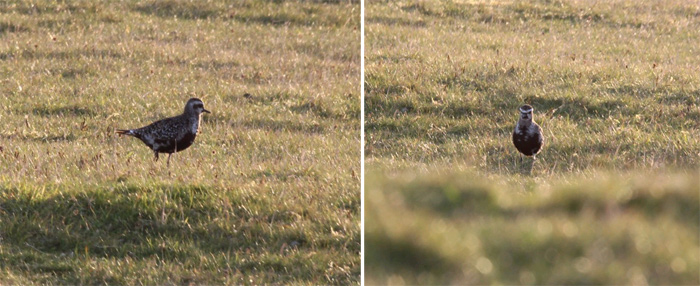
Just eight Buff-breasted Sandpipers were on offer this week, two of them at Derry’s Myroe Levels (on 29th), two more on County Clare’s Loop Head on 30th and two singles on Scilly (one on St. Martin’s on 26th and one on St. Agnes from 28th) with the other singletons at Balcomie (Fife) on 28th and Frampton Marsh RSPB (Lincolnshire) on 29th-1st.
Back again in Hampshire was the very hit-and-miss Long-billed Dowitcher at Keyhaven Marshes again on 27th-28th while there were 21 Pectoral Sandpipers logged including two at Dungeness from 25th, two in Smerwick Harbour (Co. Kerry) on 26th with a further duo out on the saltmarsh at Warham Greens on 29th (before relocating to Stiffkey Fen on 1st). Further singles were spread from Shetland to Somerset and Derry to Dorset, with inland birds at Potteric Carr (South Yorkshire) on 25th, Besthorpe (Nottinghamshire) on 30th and Doxey Marshes (Staffordshire) on 1st being three of the standout singles seen.
The only Dotterel of the week was found on Fair Isle on 30th when perhaps one of the neater shorebird finds of the week came on Scilly ~ a Kentish Plover seen amongst Sanderling on the beach on near the Abbey Pool.
The clock is ticking on when the first person in Internetland will mention the words “Snowy” and “Plover” with regard to this bird…I’ll get back to you on that…
(Funnily enough, the BOURC split of Snowy Plover from Kentish Plover came along in the same press release as the one that announced the split of Hudsonisan Whimbrel, cback in September 2011. Surely we’re due another armchair tick or two soon aren’t we?).
Orkney’s adult Laughing Gull remained on Sanday to 30th at least while the only Bonaparte’s Gull noted was the adult that remained at Heysham (Lancashire) until 25th.
The adult Ring-billed Gull popped in to Kinneil Lagoon (Forth) on 26th when another adult was again at Black Rock Strand in Kerry. Also hanging on, presumably setting up for a winter in Ireland, were the second-winter at Quilty (Co. Clare) on 28th and the adult still at Portrush (Co. Antrim) on 1st.
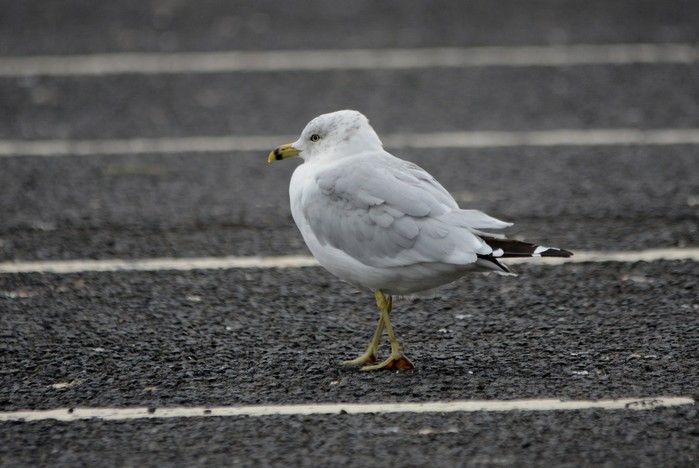
Glaucous Gulls were noted this week on Lewis (Outer Hebrides) on 27th, on the east coast of Ireland, in Dublin and Wicklow on 30th and in Moray on 1st, while the adult Azorean Yellow-legged Gull moved from Leicestershire to Northamptonshire this week ~ seen at Stanwick GPs on 27th (the same site also hosted a particularly tasty set of five Caspian and 110 Yellow-legged Gulls in the roost on 30th too.
Back in County Dublin, an adult Forster’s Tern was seen on the sandbar near Rogerstown on 29th ~ presumably the same bird that was seen in nearby County Louth in late August to October last year and 2011 too ~ it will be the seventh record for the county, and the first since 2009.
A Black Kite seen heading over Christchurch Harbour (Dorset) on 27th was the pick of the small band of raptors reported this week ~ eight single Honey Buzzard records were spread from Dorset to Lancashire and Lothian, with inland birds passing over the middle of the country in Nottinghamshire and West Yorkshire. Single reports of Rough-legged Buzzards came from Essex on 27th and Lincolnshire on 30th.
Then on 1st came news from Donegal of a Snowy Owl seen for “several days” between Ardara and Clooney. Which way was it heading? Away from St. Kilda and off towards the Mullet, or will it be a new bird entirely?
It seems strange that the sixth species of Nearctic vagrants to make a touch down on our side of the Atlantic so far this autumn is, by far and away, the commonest of the bunch.
With nigh-on 180 records to date, Red-eyed Vireo is way ahead in the record stakes compared to Eastern Kingbird, Wilson’s Warbler, Black & White Warbler, Blackpoll Warbler and Baltimore Oriole but it has taken until now for one of the more expected arrivals to make itself known.

The long-as-you-like beach at Inch Strand in County Cork boasts a small quarry area on the west side of the sand and that’s where this week’s Red-eyed Vireo arrived on the morning of 26th. As with the double-act on Inishbofin, it is hard to imagine that they were fresh-in with the weather on the dates they choose to appear on ~ most likely that this bird too has dropped off from Iceland or Faeroes.
Seven Irish counties have recorded this chunky woodland dweller to date and Cork leads the way with a whooping 31 records prior to this week’s (up to the end of 2011). Some way behind come Mayo with six, Wexford with five, Clare with four with three a piece for Galway and Waterford.
…and, up until the afternoon of October 1st, County Kerry was another county with three REVs to its name, but thanks to the discovery of one at the always-excellent looking churchyard at Dunquin, the total has gone to four.
Not far behind in the “ooooh, innarestin’” stakes (and actually markedly rarer, by around 100 birds less than the stocky Nearctic wanderer above) was the remarkable reappearance of the super male Sardinian Warbler at St. Abb’s Head (Borders) from 25th.
Originally trapped early in the morning of the last day of June, at the reedbed end of Mire Loch, the bird has somehow managed to evade detection for nigh-on three months. Did it move on, perhaps even head across the North Sea before reappearing at the very same site weeks and weeks later? Or did it just loiter nearby? Or even at the same site? Another avian mystery that we’ll never know the answer to, but it was definitely great news for Scottish listers (and twitchers from further afield too) as it lingered to 1st.
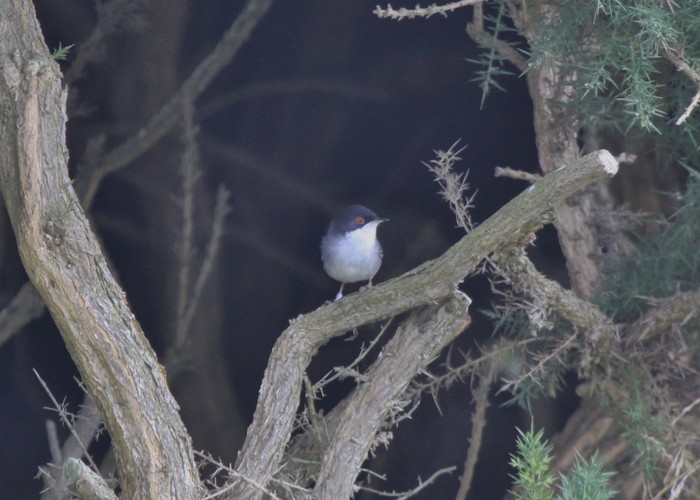
Scotland now boasts 14 records of Sardinian Warbler, but 12 of them have arrived on islands ~ seven on Shetland, three for Orkney, one in the Outer Hebrides and another on the Isle of May, off the coast of Fife. This is only the second record of the species on the Scottish mainland, the other appeared at Fife Ness Muir in October 2005.
As was mentioned when the bird appeared first time around (when it was lost amongst the excitement of a certain aerial superstar on the Hebrides…) this cracking Sylvia has become pretty tricky to catch up with recently ~ between the start of 2006 to the end of 2011, there were just four accepted records of Sardinian Warbler compared to 18 accepted birds between 2000 and the end of 2005.
The last twitchable record was the late female at Berry Head (Devon) in November 2008 and there have been a total of 81 in all since the first British record occurred on Lundy in May 1955. This week’s (sometimes singing) male Sardinian Warbler remained to 28th at least.
Staying in the north where, as a whole, Scotland has fared well over the decades for records of Roller ~ 66 recorded with a spread across 11 counties or island groups, with Highland ahead of Orkney by 15 to 11, with seven each for Argyll, Dumfries & Galloway and Shetland. Further representatives in the mix include Ayrshire, Borders, Clyde, Lothian, Moray and Perthshire ~ with a notable absentee being the Outer Hebrides. But now, that’s changed too….
The first-ever Hebs Roller was found at Glen, on Barra during the morning of 29th ~ an eye-catching record in a week full of fascinating occurrences. The bird went missing but was seen again briefly on 30th. How on earth has an autumn Roller found a way to Barra? Well, it perhaps isn’t as unprecedented as it first seems. Not only was the weather actually pretty conducive to pushing species like this towards the west coast (see the Pembrokeshire Wheatear too) this Barra bird is not even the most north-westerly record for Europe ~ Iceland has recorded three, and all those have been in September too.
Bang on cue (and as predicted last week), the first Red-flanked Bluetail of the autumn was found on Out Skerries on 29th ~ the 30th record of this superb little chat for Shetland, 21 of which have appeared in the last decade (including nine on the monster year of 2010).

Elsewhere around Shetland this week, single species highlights have included a seen-briefly Great Reed Warbler at Wester Quarff, Mainland on 29th (heart-racing stuff, thoughts of something all together more outrageous must have been in the back of the mind surely?), a Thrush Nightingale near the Pechora Pipit at Levenwick on 29th (someone will unearth another Eastern Nightingale at some point…), a Western Bonelli’s Warbler for a couple of days on Whalsay from 29th while the last week’s sound-recorded apparent Western Subalpine Warbler at Mid Yell became an Eastern Subalpine Warbler this week and remained until 1st.

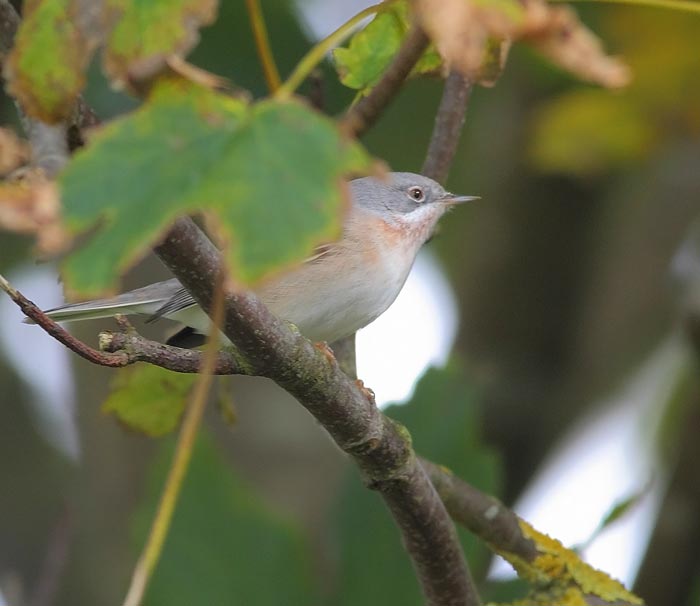
Up to seven Blyth’s Reed Warblers were seen around Shetland this week ~ two birds from last week remained at Ronas Head, Voe, Mainland and on Foula to 25th, while new on 26th were singles at Burrafirth, Unst and Funzie, Fetlar. The second in three days was found on Unst (this time at Northdale) on 28th and the sixth popped up at Sandwick, on Mainland, on 29th. Then, to round things off, Unst popped in a hat-trick bird on 1st, this one seen at Norwick.
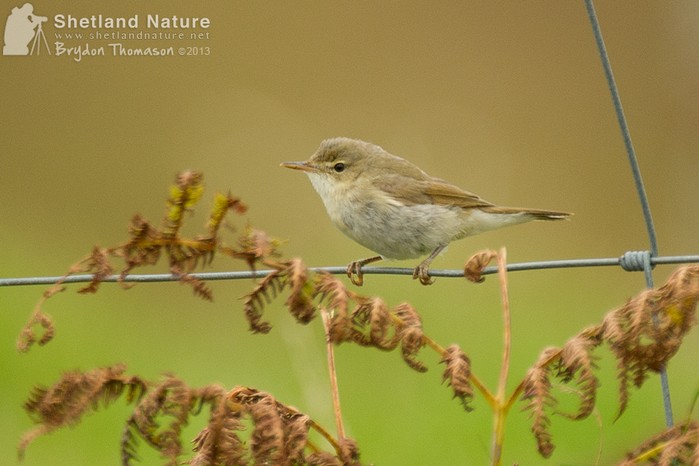
Shetland’s haul of Arctic Warblers ended at 11 in all for September with the arrival of a new bird at Loch of Voe, Mainland on 30th ~ last week’s bird at Bigton remained to 27th at least. The new month began wioth another new Arctic Warbler, seen at Baltasound on Unst, while four of the week’s Olive-backed Pipit made landfall around the islands too ~ on both Fair Isle and at Frakkafield, Mainland on 25th and on Unst and Whalsay on 30th.

Several Hornemann’s Arctic Redpolls were discovered across Shetland too this week, staring with one on Fair Isle on 25th which was followed by another the same day at Loch of Spiggie with two singles on Unst and another Mainland loner, at Fladdabister, on 26th. The 27th saw at least three birds together at Sullom, on Mainland with another out on Foula, while 28th saw the 10th of the week drop in to the bushes near Pool of Virkie.
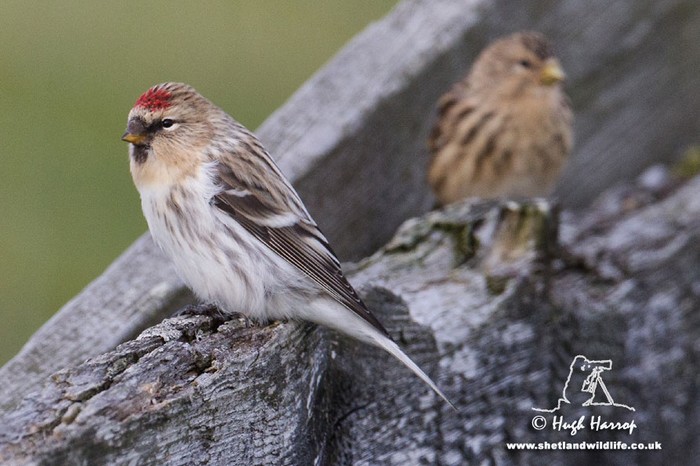
Tracking back to three of the species mentioned above for a moment, we’ll tidy up the remaining records away from Shetland….
Along with the seven birds way up north, a further five or six Blyth’s Reed Warblers were seen this week ~ one was trapped on South Ronaldsay (Orkney) on 26th when another was found on Barra (Outer Hebrides) and a third was seen at Whitburn (Co. Durham) ~ this last bird remained to 28th. Next came one on Skokholm (Pembrokeshire) on 27th with another on Holy Island (Northumberland) on 28th. In Cheshire, at Hoylake, a singing male was reported from 29th-1st.
Orkney’s second Arctic Warbler in a week was at St. Margaret’s Hope, South Ronaldsay on 26th, while four more Olive-backed Pipits were found away from Shetland ~ two of them on Orkney, on North Ronaldsay on 25th and Papa Westray the following day. Fife’s Isle of May scored on 30th and then October 1st saw the arrival of one at Spurn (East Yorkshire).
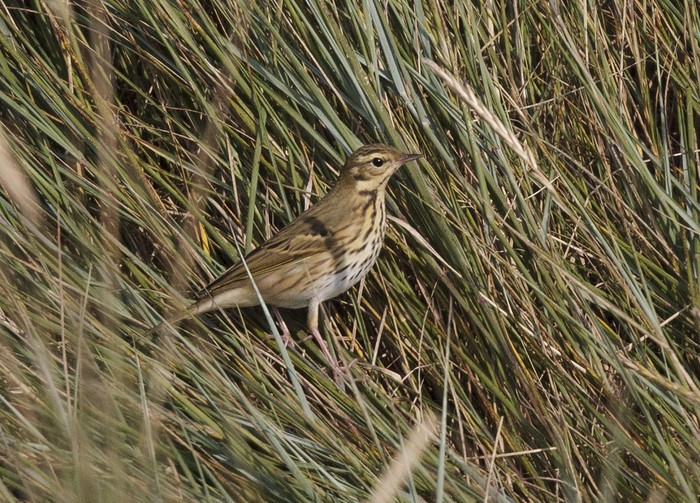
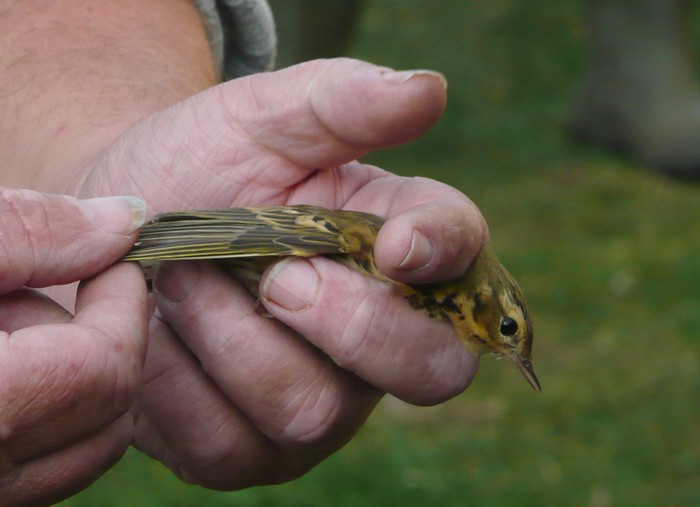
The Wexford Booted Warbler remained at Hook Head until 27th with the same date seeing the arrival of a new individual on Shetland, on Out Skerries. A second new bird for the week was a one-day bird at Seaford (East Sussex) on 30th ~ a particularly significant appearance too, as it now conforms that 2013 is the best year ever for the species, beating the previous 12 month best of 13 in 1993.
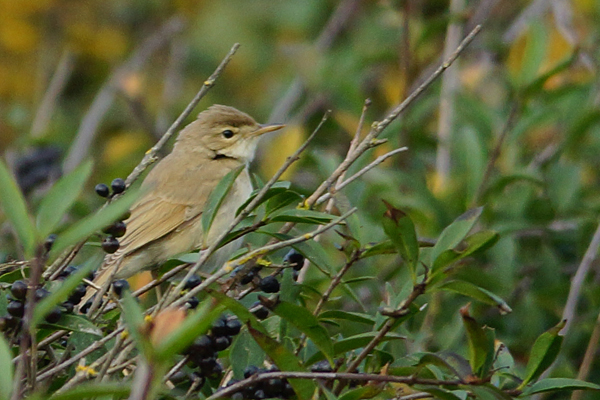
A Greenish Warbler was noted in gardens at Reiss (Highland) on 27th and another was reported from Argyll, near Campbeltwon on 1st. An Aquatic Warbler was on Big Pool, St. Agnes (Scilly) on 28th. Another was reported from the car park at Brow Head (Co. Cork) on 28th (a huge Irish rarity if accepted) and there was also belated news of one trapped and ringed in Nanjizal Valley (Cornwall) on September 22nd. Back in Cork, a Western Bonelli’s Warbler was a great find at Gairinish Point on 27th where it stayed until 1st ~ the eighth county record (Cape Clear has five, Mizen Head two). In Norfolk, a Bonelli’s Warbler sp., was a brief report near Hunstanton on 1st.
Off the coast of North Wales, on Gwynedd’s Bardsey Island, the fine-looking Siberian Stonechat remained to 29th with a new arrival appearing in Suffolk, at Trimley Marshes on 1st. At least 11 Bluethroats were seen ~ four of them appeared on 25th (two on Shetland ~ on Fair Isle and Foula ~ one on Orkney ~ on North Ronaldsay ~ and one in Northumberland ~ on St. Mary’s Island, with further singles following on St. Mary’s (Scilly) from 27th, on Shetland at Skeld, Mainland on 28th with two on Whalsay on 29th, with another on Blakeney Point (Norfolk) the same day. The final one of the week arrived on Fair Isle on 1st.
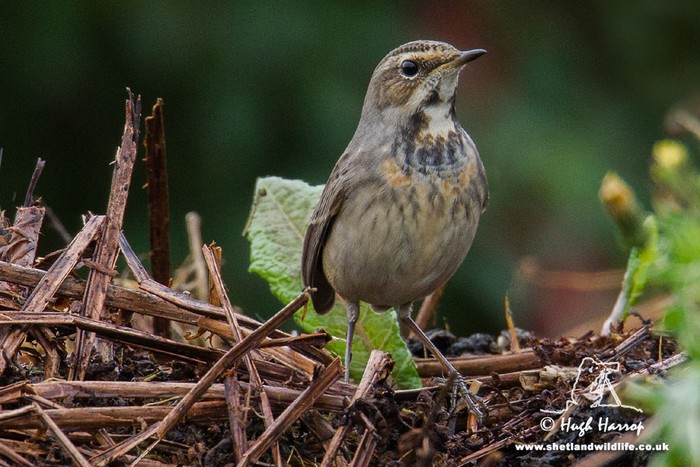
Three Tawny Pipits got a mention this week, briefly at Cuckmere Haven (E. Sussex) on 25th, near Zennor (Cornwall) on 26th and at East Soar (Devon) on 29th, while Richard’s Pipits has their best collective week of the year ~ up to 22 logged countrywide (almost entirely along the east coast) with up to five in Durham, including three at Whitburn on 27th-28th. Two were at Spurn on 30th and on Fair Isle on 1st, while two singles were reported in east and north Norfolk as well. Elsewhere down the east side of the country, birds were noted from Shetland and Orkney to Lincolnshire, while on the west side, singles were in Cornwall, Gloucestershire, Pembrokeshire, Conwy and Anglesey.
Also from Wales this week, late news of a Red-throated Pipit at Landimore, on the Gower, on 28th ~ subsequent searches there proving fruitless, while the week’s only Short-toed Lark was on Foula on 30th.
There were a minimum of 38 Red-breasted Flycatchers through the last seven days ~ with the bulk spread between Scotland (16) and northeast England (15). At least eight were seen around Shetland, including three on Fair Isle on 26th, with seven other counties/island groups logging birds (from Orkney to the Hebs and down to Borders).
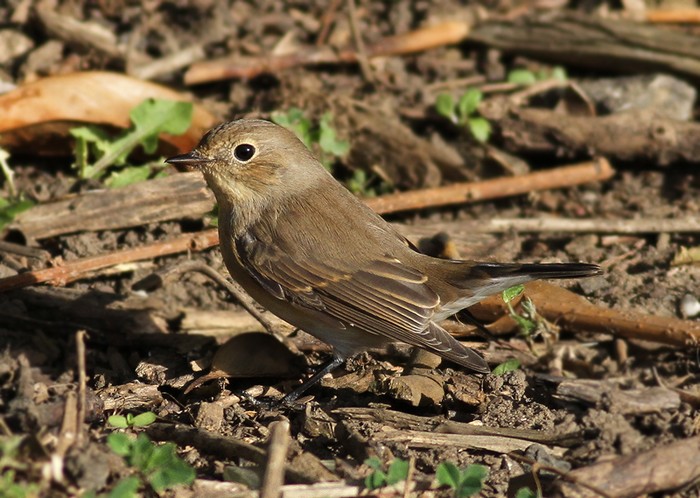
Around the east coast, there were four singles in East Yorkshire, three were at Whitburn (Co. Durham) on 1st and two were seen on Hartlepool Headland (Cleveland) on 26th, while both North Yorkshire and Lincolnshire recorded two birds each. Further south, singles were seen in Norfolk, Suffolk and Kent, with others making to west Cornwall and Scilly while two more made it to Pembrokeshire and Anglesey.
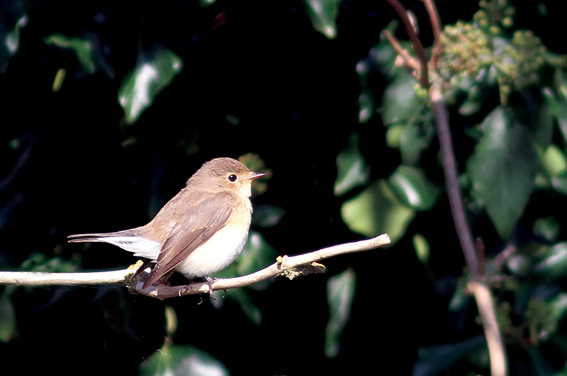
Back to warblers for a while now ~ a single Icterine Warbler was seen this week, on Unst from 25th-26th while two of the three Melodious Warblers made landfall in Cornwall, one was at Sennen Cove on 29th with the other at Rame on 30th. The other Melody this week was found at Cahore (Co. Wexford) on 28th.
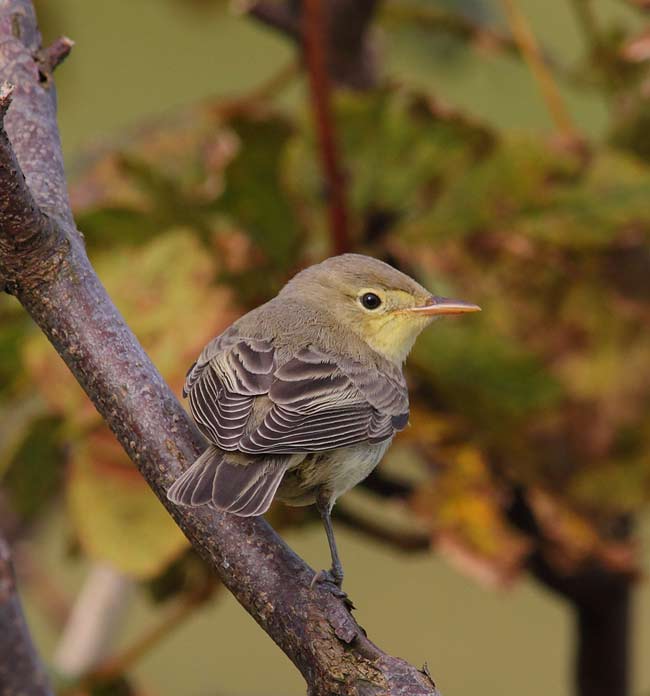
The quartet of single Marsh Warblers were spread around Scottish islands ~ two for Shetland and one each Orkney and the Outer Hebrides ~ while Shetland collected over half of the week’s 15 Barred Warblers with one on Fetlar, two on Fair Isle and four on Mainland (the seventh was seen on Foula). Four east coast counties saw one a piece (Durham, Cleveland, East Yorkshire and Essex) while two were in Ireland ~ one found on Inishbofin last week was still in place on 25th and another appeared on Hook Head on 26th.
Shetland also held the majority of the Common Rosefinches too ~ 15 out of 26 recorded there with birds noted on seven islands, with six on Mainland, four on Unst and two on Fair Isle leading the way. Three were on North Ronaldsay on 26th while there were five for the southwest and four for the northeast of England, and two in Ireland ~ one found on Inishbofin on 25th with another on Cape Clear Island the same day.
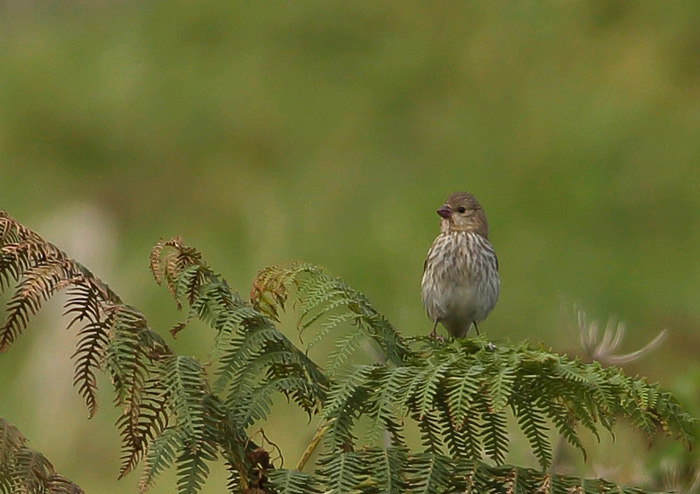
Staying briefly on Inishbofin, the excellent run of birds found there in the last seven days continued with a juvenile Woodchat Shrike on 26th (only the second there in at least the past 10 years or so, the other one was seen at Kilmurvey on Inishmore last year ~ keeping that ole symmetry thing chooglin’ along nicely once again…).
Red-backed Shrikes wriggled up to 16 birds across Britain and Ireland this week, with four around Shetland and two each for Northumberland and Norfolk the areas with anything above singles. As expected, most were found along the east coast but individuals were found in Dorset, Glamorgan, Lancashire and Cork, while last week’s bird in Wexford, at Hook Head, was also present at the start of the week.
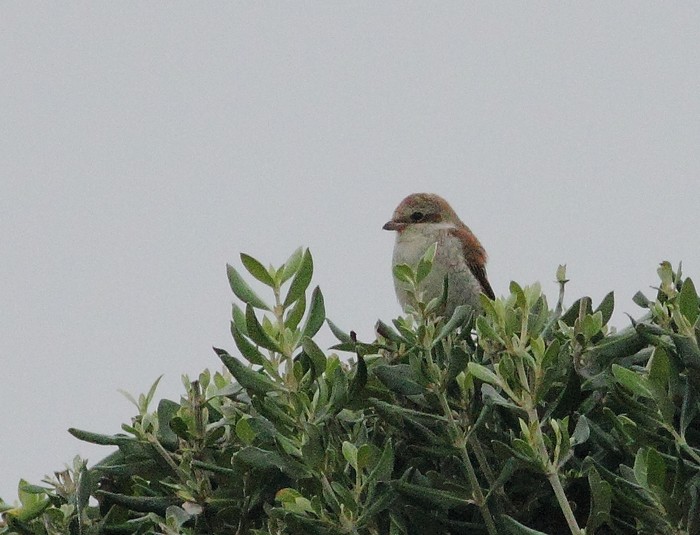
Just for once this week, there was a distinct southwestern bias to a species ~ Wryneck being the bird in question. Just over 50 were logged in all, with the far southwest of England claiming the lion’s share with 22, while the southwest and west coast of Ireland wasn’t far behind, 17 there.
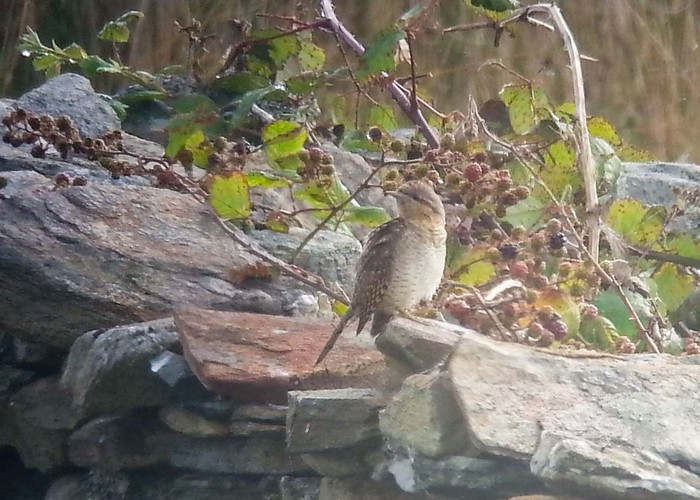
At least a dozen were on Scilly, including a minimum four on St. Mary’s on 28th, while seven were on the Cornish mainland and two were in Devon. Cork fared well too, perhaps as many as nine there, with three on Galley Head the best single site in the Republic. Elsewhere in Ireland, Wrynecks were seen in Clare, Kerry, Galway (another Inishbofin bird and a mega for the county to boot) and Waterford, while both Wexford and Mayo registered two each. Seven were also seen in Wales, with four in Pembrokeshire (along with two for Glamorgan and one in Gwynedd).
An Alpine Swift was over the Old Head of Kinsale (Co. Cork) on 26th and a Red-rumped Swallow headed over Landguard NR (Suffolk) on the same day. In Lancashire, a Golden Oriole was at Fleetwood on 25th while Hoopoes were noted at Howth (Co. Dublin) from 27th, on South Ronaldsay (Orkney) on 29th with a further Irish reports coming from near Cloyne (Co. Cork) on 30th and Dungarvan (Co. Waterford) on 1st. The same date also saw one arrive at Bamburgh (Northumberland).
In Devon a new juvenile Rose-coloured Starling was at Prawle Point on 25th and another was reported from Selsey on 1st ~ others noted this week lingered on St. Agnes (Scilly), at Marazion and on the Lizard (Cornwall) and also at Caister-on-Sea (Norfolk).
Dungeness is already well past 50 records of Penduline Tit, but it remains an entertaining find and a southbound single over there on 30th must have still given observers a buzz.
Even more exciting for Kentish birders would have been the discovery of a juvenile/female Two-barred Crossbill at Challock on 29th ~ the first in the county since a female spent 17 days at Goudhurst in March and April 1991 and two singles at Bedgebury in October 1990. These are the only four records for the county.
Elsewhere, at least five Two-barred Crossbills, three adult males, a juvenile male and a female lingered at Broomhead Reservoir in South Yorkshire through much of the week, while a male was still at Lynford Arboretum (Norfolk) to 29th. On Shetland, last week’s juvenile was still on Unst to 25th.
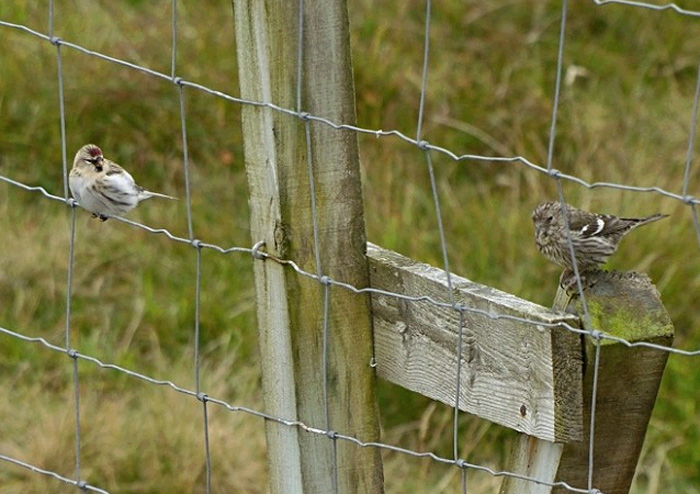
Making an RBA Round-up debut this week is Parrot Crossbill, three of which were seen on the coast of Angus, at Mains of Usan on 25th. This triumvirate of big-bills are far enough away from areas where Parrots are thought to be (we all know what a nightmare Crossbills in Scotland are…) so, these have to be regarded as genuine immigrants, although the chances of dispersal from Speyside and elsewhere has to be borne in mind I guess…
Scilly and Shetland had an Ortolan Bunting each this week, one still on St. Mary’s to 29th with the other on Unst on 25th. The only other record this week came from a very productive Welsh coast, seen over Bardsey on 29th.
Little Buntings on the other hand, were three times as common as Ortolan ~ 11 notched up, with five on Shetland (with two on Fair Isle, two on the Mainland at Wester Quarff and Maywick, and one more on Foula), along with two on the Farnes on 30th and another Northumberland bird on Holy Island on 27th. A little further north, off the Fife coast, a Little Bunting was on the Isle of May on 30th and on Scilly, one was around the Porthloo area of St. Mary’s from 28th. The bird that got the ball rolling was found on Blakeney Point on 26th.
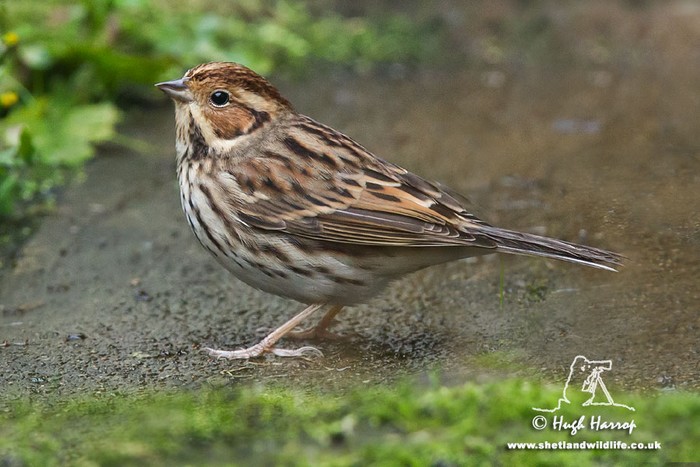
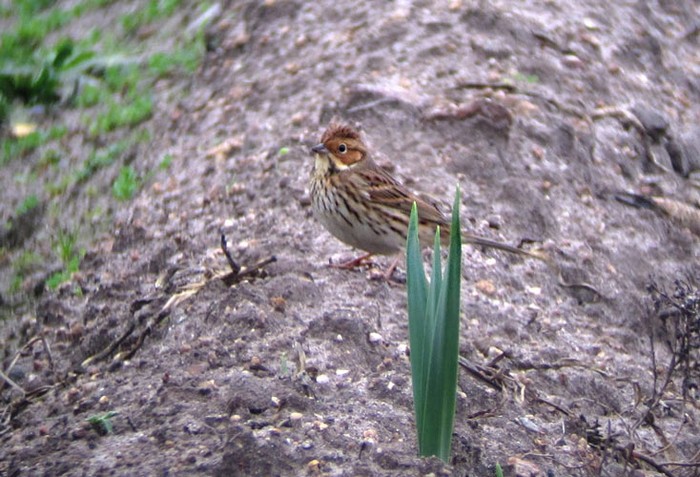
Meanwhile in County Durham, at Whitburn, the first Rustic Bunting of the autumn was found on the afternoon of 27th ~ the first county record for nearly 13 years when one was at Marsden in October 2000. The same site held two birds over September 15th-16th 1993 and the only other record was seen near Sunderland in October 1990.
…and so, finally, we come to the BIG mover and shaker of the week. Yellow-browed Warbler. If you think you’ll get the definitive tally for the species this week ~ think again! That would induce a migraine of epic proportions...so, it will be the major “scores-on-the-doors” from here on in...
As expected this marvellous little long-haul traveller began to litter the Northern Isles, Scottish mainland and northeastern coasts as the week began ~ easily exceeding three figures within the first day and a half of the new review period.
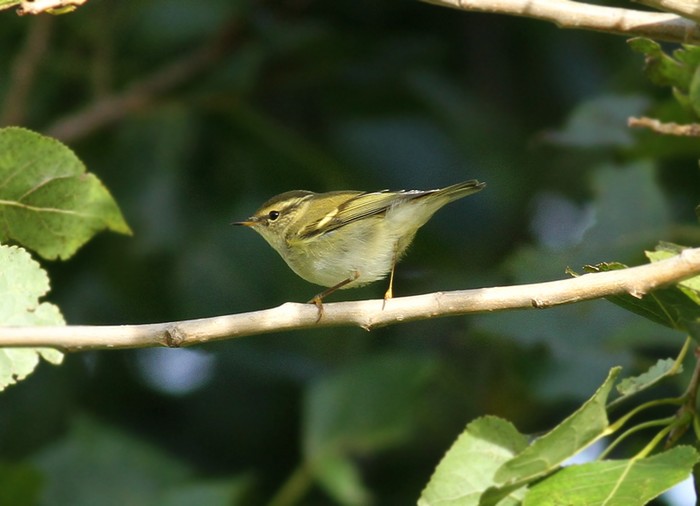
On 25th, up to 17 birds were found around Unst with 16 on Fair Isle, with 19 at Voe and 15 at Levenwick (both on Mainland Shetland) the following day. At least 10 new birds pushed through the Isle of May on 25th while Orkney recorded six on both South Ronaldsay and Sanday. On the Scottish mainland the 25th also saw five Yellow-broweds arrive at St. Abb’s Head (Borders) with four at Tarbet Ness (Highland) and another four at Buddo Ness (Fife) ~ birders at St. Abb’s clocked up at least a dozen on 26th.
Further south, the islands off the coast of Northumberland fared particularly well early in the week ~ on 25th 17 were counted around Holy Island, 10 were on St. Mary’s Island while Farnes managed at least nine. On the mainland, eight birds were logged around Whitburn (Co. Durham) while both Newbiggin-by-the-sea and Filey recorded five each.
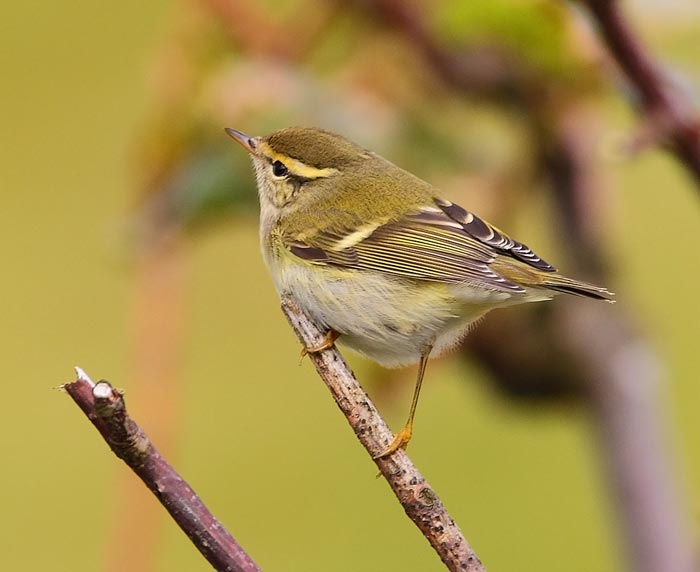
The following day saw five Yellow-browed Warblers appear at Bempton Cliffs RSPB (East Yorkshire) and Hartlepool Headland (Cleveland) with six at Loftus, in the same county.
At least a dozen birds were noted around East Anglia by the end of 26th and one had made it to Essex as well. Ireland also picked up three birds on 25th ~ at Portrush (Co. Antrim), Dunquin (Co. Kerry) and Cape Clear Island (Co. Cork).
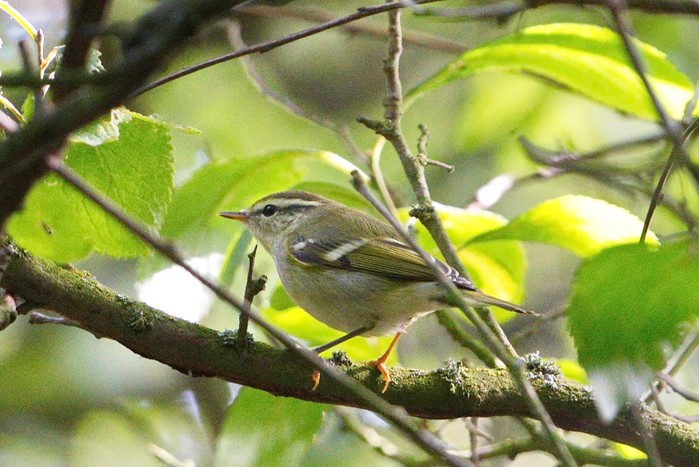
Birds continued to stream in as the weekend approached and that is when the bulk were strewn across Shetland (for starters) like a mass of wing-barred “tseeweest”-ing flotsam and jetsam. Over 100 birds were counted around Unst alone on 26th, with a mind-boggling 60 at Baltasound along with 15 at both Haroldswick and Norwick. A further 40 or so were on Fair Isle the same day with 13 on Folua as well.
Pockets of moderate single figures were recorded all across the islands as the week continued while eye-catching totals at single sites included 15 at Voe and 10 at Quendale on 28th and 19 at Sandwiock, on Whalsay on 29th.
On Orkney there were two single day counts of 17 birds on North Ronaldsay on 26th and 28th while on the mainland of Scotland itself some of the higher totals noted included 13 at St. Abb’s Head on 26th.
Further south, 27th was a significant arrival day too ~ in Cleveland there were 12 on Hartlepool Headland and 19 birds were logged around Spurn with a dozen at Flamborough Head (with consecutive double-figure days following for the latter site on 29th and 29th).
As the week progressed, Yellow-browed Warblers continued to arrive through East Anglia (a mass of ones and twos there, and a three as well in Holkham Pines), in to southeast (including three at Margate on 30th) and southwestern parts of Britain (several singles logged from Dorset to Scilly).
In the northwest of England, half a dozen made there way to Cheshire and Lancashire by the end of the week and in Wales, a minimum three of the minimum seven there were on Bardsey Island on 30th (with two in Conwy and one in Pembrokeshire.
Two singles had also filtered to inland locations this week ~ one popped up in Gloucestershire, at Chipping Sodbury and another was at Oakham in Leicestershire.
Finally in this mini round-up of all things inornatus, to Ireland where at least 20 birds were noted across nine counties. Three were on Doengal’s Tory Island on 28th and followed three at Tarmon, on the Mullet (Co. Mayo) the previous day. Two were found on Wexford’s Great Saltee Islands on 28th and there were two also for Loop Head (Co. Clare) on 26th.
Phew….another monster week done and dusted. The weather is taking a westerly turn by the look of it, so it should be all eyes on Scilly (how many people are there at the mo?), the regular spots around the Irish southwest and west coasts, may be the Hebs and certainly Shetland. Whether the lightweight-looking conditions forecast will do the biz is up for debate, but this has already been a bonkers autumn.
Rule nothing out.
So many options spring top mind ~ October 2nd has recorded 10 different species of Nearctic passerines but also both Siberian Blue Robin and Rufous-tailed Robin (but lets move on swiftly from that one after this week’s 30 minute seizure-inducing mega…).
Many would be happy for a repeat of the October 4th 2001 Grey Catbird on Anglesey, a date which also holds that fabulous Cape Clear Blue-winged Warbler in the palm of its hand (along with American Redstart in Hampshire in 1985 and the first-ever Scarlet Tanager on Scilly in 1970).
And there, nestled away on October 5th, along with assorted belting Sibes ~ a Rubythroat and a Thrush ~ lies one of our most recent Rufous Bush Chat records, seen at Flamborough Head on October 5th-6th 1972. Just one more has followed, at Prawle Point in August 1980 and there’s not been a sniff of one here since ~ however, the incredible Dutch first found this week at Petten, on the northwest arm of the country shows that we do have a chance.
A look at the map shows it was in a straight line with the Norfolk coast, aiming at the north end of the east coast, maybe Sea Palling or perhaps further round towards Cart Gap and Happisburgh…so close, yet so far…
All to play for then ~ it may even quieten down a bit….
Andy Stoddart takes over for a while as I head to a darkened room for a bit…and maybe even get in to the field after that…
Mark Golley
03 October 2013
Many thanks also to the rest of this week's contributors for their photos and videos.







